“Blessed are you when people insult you, persecute you and falsely say all kinds of evil against you because of me. 12 Rejoice and be glad, because great is your reward in heaven, for in the same way they persecuted the prophets who were before you.”
Bible – Matthew 5 : 11-12

Mariam Thresia Chiramel
Marth Mariam Thresia (born Thresia Chiramel Mankidiyan; 26 April 1876 – 8 June 1926) was an Indian Syro-Malabar Catholic professed religious and the founder of the Congregation of the Holy Family. Thresia Mankidiyan became known for receiving frequent visions and ecstasies as well as even receiving the stigmata which she kept well-guarded. She had been involved in apostolic work her entire life and pushed for strict adherence to the rule of her order amongst her fellow religious.
Pope John Paul II beatified the late nun on 9 April 2000. Pope Francis approved a second miracle attributed to her at the beginning of 2019 and she is to be canonized on 13 October 2019.
Life
Thresia Chiramel Mankidiyan was born in Puthenchira in Irinjalakuda Revenue Division of Thrissur district on 26 April 1876 as the third of five children of Thoma and Thanda and was later baptized on 3 May 1876 at the church of Saint Mary; she was named in honor of Saint Teresa of Ávila.
Her paternal uncle Antony Chiramel Mankidiyan was her godfather and his wife Anna was the godmother. Her family was once rich though became poor when her grandfather married off seven daughters after selling property for each costly dowry; this led to her brothers and her father taking up drinking.
Her mother was her father’s second wife; her father’s first wife Mariamkutty died during childbirth in 1872. She had two sisters and two brothers and were in exact order: Porinchu, Mariamkutty, Ouseph and Ittianam – she was born in between Mariamkutty and Ouseph.
In 1884 her mother tried in vain to dissuade the pious girl from her severe fasts and night vigils. Her mother died on 2 March 1888 after blessing her children who gathered at her deathbed. Her mother’s death marked the conclusion of her studies and she instead dedicated herself to contemplation in her local parish church. She made a private vow to remain chaste in 1886.
In 1891 she hatched a scheme to sneak from home to lead a life of penance in the hills but soon decided against this and instead returned home. Since 1904 she desired to be called “Mariam” under the belief she had a vision from the Blessed Virgin Mary in which she was instructed to add it to her name. From 1902 to 1905 she was subjected to several exorcisms from Venerable Joseph Vithayathil – under the orders of the local bishop – and from 1902 it was Vithayathil who became her spiritual director until her death.
In 1903 she requested Mar John Menachery – the Archbishop of Thrissur – to build a house of retreat but it was turned down. This happened after she had formed a group with three other friends and engaged in apostolic work with poor families. Menachery instead suggested she make an effort to join a religious congregation and encouraged her to join the new Congregation of the Franciscan Clarists but left since she didn’t fell called to it.
Mankidiyan later accepted the mar’s request in 1912 to join the Carmelites at Ollur and was there since November 26, 1912 until she left on 27 January 1913 because she did not feel drawn to them either.
In 1913 she set up a house at Puthenchira and on 14 May 1914 founded the Congregation of the Holy Family to which she was professed in and vested in its habit; she was the first superior of the order. She was said to have had a range of spiritual experiences such as receiving the stigmata and hid this from public view; she first had this in 1905 though became more visible on 27 January 1909. She also purportedly suffered a series of demonic attacks.
In 1926 a falling object struck her on the leg and the wound soon festered. Mankidiyan was admitted to the local hospital though doctors deemed her condition fatal and she was moved by bullock cart back to her convent where on 7 June 1926 she received the final sacraments and the Viaticum.
She died at 10:00pm on 8 June 1926 from her leg wound that her diabetes exacerbated. Her final words were: “Jesus, Mary and Joseph; I give you my heart and my soul” – she then closed her eyes and died. On the morning of her death she was laid on the floor on a mat at her request with her spiritual director and fellow religious huddled around her. Her funeral was celebrated on 9 June and in accordance with her wishes her remains were not washed prior to her funeral.
Canonization
Miracles
1. The cure of congenital club feet – Mathew D. Pellissery
The beatification process opened in Irinjalakuda on 12 July 1982 after the Congregation for the Causes of Saints (C.C.S.) titled her as a Servant of God and issued the official “nihil obstat” (nothing against) to the cause while the cognitional process opened on 14 May 1983 and concluded its business on 24 September 1983; the C.C.S. later validated the process after its conclusion in Rome on 8 November 1985 and received the Positio dossier from the postulation a decade later in 1997.
The board of historians met to assess the cause and to determine if historical obstacles existed before issuing their approval for the cause on 27 May 1997 at which point the theologians approved it on 9 October 1998 as did the C.C.S. on 19 April 1999. Pope John Paul II named the late religious as Venerable on 28 June 1999 after he confirmed that she had lived a life of heroic virtue.
The investigation of the miracle required for beatification was held in the Trichur eparchy from 28 April 1992 to 26 July 1993 and was validated on 22 January 1999 before receiving the approval of the medical board on 16 November 1999. Theologians then voiced their own approval on 5 January 2000 .
The miracle was that of the cure of one Mathew D. Pellissery, who was born in 1956 with congenital club feet. He could barely walk with great difficulty on the sides of his feet until he was fourteen. After 33 days of fasting and prayer by the whole family, invoking the help of Mariam Thresia, his right foot was straightened during sleep on the night of 21 August 1970.
Similarly after 39 days of fasting and prayer his left foot was also straightened overnight during sleep on 28 August 1971. Since then, Mathew has been able to walk normally. This double healing was declared inexplicable in terms of medical science by as many as nine doctors in India and Italy and thus met the last canonical requirement for her beatification.
It was declared a miracle obtained through the intercession of Mariam Thresia by the C.C.S. on 18 January 2000 before the Pope himself issued final approval on it on 27 January 2000. John Paul II beatified Mariam Thresia on 9 April 2000 in Saint Peter’s Square. Mathew Pellissery was present there during the beatification ceremony at St. Peter’s Square.
The second miracle – Healing of the child Christopher – The one needed for her canonization
The second miracle – and the one needed for her canonization – was investigated in the diocese of its origin and later received the formal validation of the C.C.S. in Rome on 24 June 2014. The miraculous healing of the child Christopher received approval from the medical board in Rome in March 2018 and theologians later confirmed it in October 2018. Pope Francis approved this miracle on 12 February 2019 which clears her for canonization; it is scheduled for 13 October 2019.
Source: Wikipedia Creative Commons Attribution-ShareAlike License

St. Mariam Thresia – The Patroness Of Families – A True Story
This small movie is telling the life history of Mariam Thresia.
Extract of the video script
Puthenchira a very ancient parish of the Archdiocese of Thrissur in Kerala, well known as God’s own country, situated at the southern end of India had the fortune to be the birthplace of Mother Mariam Thresia.
Today, Puthenchira is in the Diocese of Irinjalakuda.
Chiramel Mankidiyan was a traditional family in the village of Puthenchira. Thresia was born the third child of Thoma and Thanda in Mankidiyan family on 26 April 1876.

കാക്കര [CC BY-SA 3.0], via Wikimedia Commons
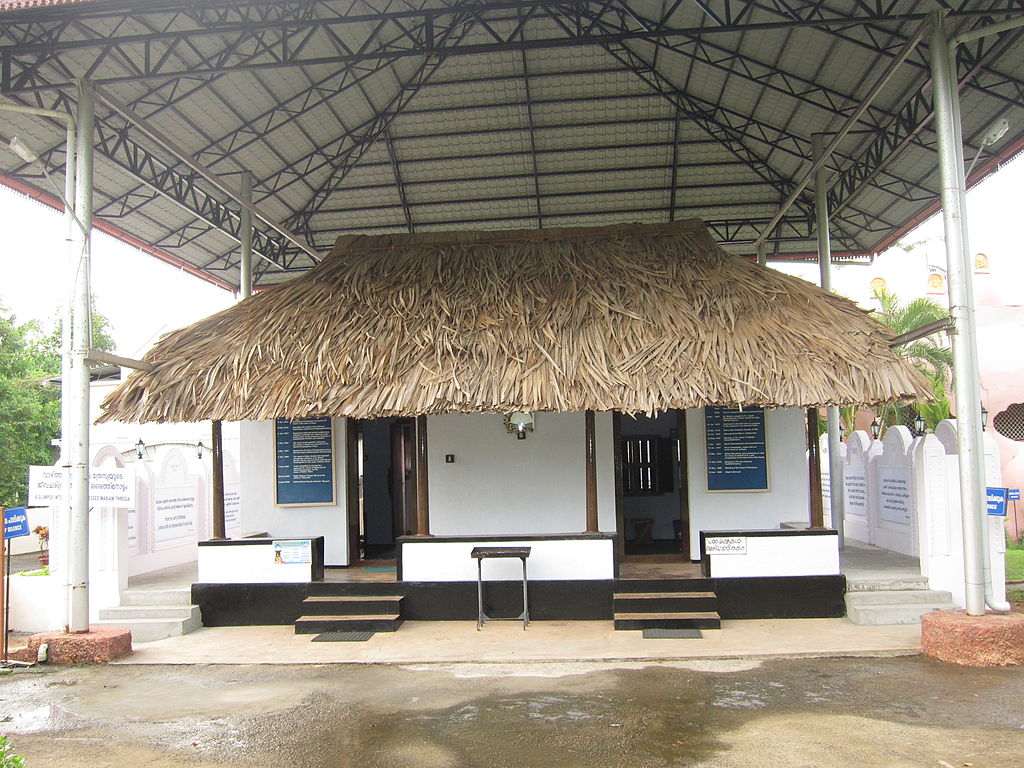
കാക്കര [CC BY-SA 3.0], via Wikimedia Commons
At an early age Thresia grew in prayer and piety under the spiritual guidance of her mother. Her mother always give right answers to all her doubts.
She owned to grasp the mystery of the Holy Trinity. Her love for Blessed Virgin Mary was strong. She spoke everyday to Blessed Virgin Mother. Blessed Mother was like a real mother to her. She always had the freedom with Mother Mary as she had with her own mother.
Thresia has written in her autobiography that Blessed Virgin Mother appeared to her one day and taught her to recite the Rosary. she yearned for a life of deep solitude.
Her heart burned with God’s love Zyliss enough to be consumed in the fire of divine love to merge with Jesus .She desired to be all alone in the wilderness away from everyone’
One day she was in deep contemplation being alone in the wilderness. But her three companions with a sister forcefully brought her home. Her thirst for prayer and solitude grew intensely day by day. It became certain that the conditions at home were not favorable for a life of solitude.
The poor financial status of our family was not conducive for her to join a convent either. But the inner fire did not permit her to be quiet.
She went to her uncle who was rich and asked him 450 rupees needed to join a convent. Her uncle and aunt sent her away without giving her any money. she went back in tears.
Thresia thirsted for the love of God. God answered Thresia’s prayers for a spiritual director to guide her in her helpless condition.
God chose Father Joseph Vithayathil to be her spiritual director. The Reverend priest having come to know from Thresia about her divine inspirations and visions was inspired by the holy spirit to agree to be her spiritual director.
Having received the divine call could not be confined to her home. Her own personal sufferings could not deter her from the works of charity.
Directed by Blessed Virgin Mother Thresia visited the families of her own parish and around. There was not a house in Puthenchira that Thresia had not attended to. Her presence at the dead bed helped many to have a peaceful death.
Hence she constantly prayed for the souls in purgatory. Many instances have been recorded of souls in purgatory appearing to Thresia and pleading for prayers and Thresia having helped them.
Thresia prayed fervently and dependence for the souls in purgatory. There were times when she spent whole nights in prayer for the souls in purgatory and for the conversion of sinners.
As per the order of Bishop John Menachery Father Joseph admitted her in the Carmelite third order giving her veal and scapular.
Thresia and her friends continued the family apostolate. They became a refuge to the downtrodden and the marginalized of Puthenchira.
Thresia who remain in meditation for hours before the crucifix in her small room was of inspiring to her people and neighbors.
10th February 1906 the time Thresia was immersed in meditation. Thresia was eager to share the sufferings of Jesus. She asked for his cross and bore it on her shoulder.
No one could comprehend the things that happen within Thresia.
The bishop received many complaints about Thresia that there were diabolical positions in her house,that the devil had possessed her, unusual events were happening in Thresia and in her house.
The bishop by the power of the authority vested on him by the church issued an order of exorcism. Father Joseph Vithayathil the parish priest pasted this order of exorcism on the door of Thresia’s house. This caused fear among the people.
But the response of Trisha surprised everyone ” Oh what a blessed gift“. Caressing and kissing the order recognizing her obedience to the church authority.
Are you be? It’s a matter of happiness for me to be mugged it like Jesus. No one would understand it. My God, My trust.
Father I have a request to make. Please paste a copy of this order of exorcism on the main door of the parish church and also read at the Holy Mass on Sunday.
Also watch Krooshithante Snehithe | St. Mariam Thresia Song
Smallpox epidemic spread in Kochi
In January 1909 smallpox spread all over the state of Kochi. Hundreds of people died. There was no vaccination or effective treatment. The epidemic spread murderously. There was no one even to nurse the infected people. They tried to bury the patients alive wrapping them in a mat.
Thresia did not stay back in fear. Day and night Thresia moved up and down nursing, consoling and readying the dying for a peaceful death.
People during smallpox as occurs from God sought refuge in prayers. Thresia prayed to her God to save her village from this dreaded disease. Gradually smallpox disappeared.
This event doubled the confidence of the people of Puthenchira in Thresia.
The feeling that this disaster was the result of their sins became strong among people. Her presence became a great blessing for them.
Founded The Congregation Of The Holy Family
The congregation of the Holy Family was founded on the 14th May 1914 in Kerala, India. On the same day Thresia received the religious habit and the name Mariam Thresia officially from Bishop Menachery and she professed her perpetual vows.

കാക്കര [CC BY-SA 3.0], via Wikimedia Commons
Mother Mariam Thresia started a school for girls at Puthenchira
As child marriage was a common factor in those days education had been denied to goes. In contradiction to this Mother Mariam Thresia started a school for girls at Puthenchira. Pioneering a social revolution of relating women the vision and goal of Mother Mariam Thresia was to save families giving education to the downtrodden and imparting knowledge of God to them.
The mission of building up families
Mother Mariam Thresia raised the families of the alcoholics, imparted consolation by the power of her presence and care. Her closeness and sacrificial prayers helped many to deepen their faith. She took up the mission of building up families and preparing them for the Lord.
It was a time when people believed that religious sisters were not meant for the services in families outside the convent. It was considered to be below the dignity and standard of religious life.
Mother Mariam Thresia shattering all these existing conventions and beliefs went from house to house and in the real sense of the word she washed and kissed the feet of the sick and the destitute. She was trying to save souls through the renewal of families.
Her hesitated to help the poor begging from rich. She shared the whole lot with the poor. Mother Mariam Thresia was there with food wherever there was starvation.

കാക്കര [CC BY-SA 3.0], via Wikimedia Commons
Mother Mariam Thresia inspired the people of Puthenchira
The examples of Mother Mariam Thresia inspired the people of Puthenchira. Many came forward to the scene with a helping hand. They thought if a woman could do it, so good day people lined behind her in support.
Mother Mariam Thresia regardless of caste and Creed to care of the poor and the downtrodden. Such charitable acts opened the eyes of many people of the society.
But some did not like it. They met Father Joseph Vithayathil and complained against her. The gossip mongers could not continue for long. Some of them realising that it is the duty of every Christian to help the poor, converted themselves and ask pardon and brought food for the poor of Mother Mariam Thresia.
Quote – Mar Andrews Thazhath – Archbishop of Thrissur
Blessed Mariam Thresia who founded the congregation there a great vision for the renewal of the church to his basic unit which is called the family. Family is the domestic church and if you renew the domestic church the whole church, universal church is renewed.
Mar Andrews Thazhath – Archbishop of Thrissur
Source : YouTube
Vishudhithan Padavil | Mariam Thresia Song By Fr Sajo Padayattil
The miracle for the cause of canonization accepted by the Vatican
The Superior General of the Congregation of the Holy Family said that the miracle regarded a pre-term baby boy born with a life-threatening respiratory problem. The doctors had prescribed a particular medicine through a special ventilator which was not immediately available. On the third day, when the child was gasping for breath, the doctors sounded the alarm bell.
The parents and grandparents of the child are great devotees of Mariam Thresia. The grandmother placed a relic on the child and urged all to pray earnestly to Mariam Thresia. There was a “drastic improvement” on the child in about 20 to 30 minutes. The immediate healing could not be explained medically.
Sr. Udaya explained that it was a surprising coincidence that the miracle took place on April 9, 2009, the same day that Mariam Thresia was declared Blessed in Rome. The miracle was presented to Rome for the cause of canonization in 2013, several years after the healing and it was accepted by the Vatican.
Source: Vatican News
Also Watch Vishudhithan Padavil | Mariam Thresia Song By Fr Sajo Padayattil
Images of Canonisation – October 13, 2019
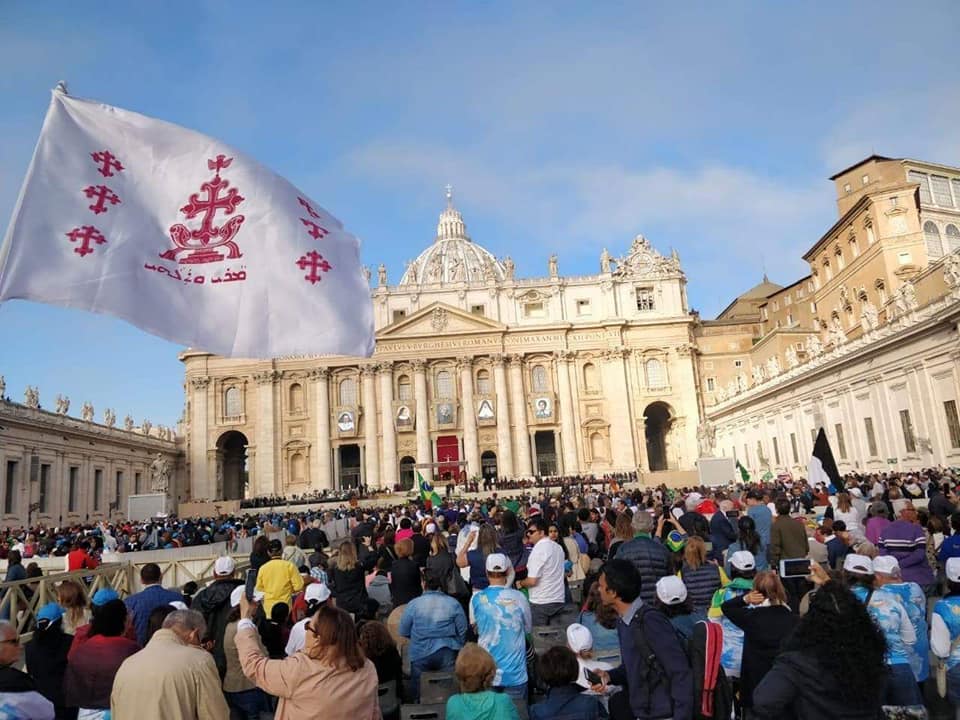


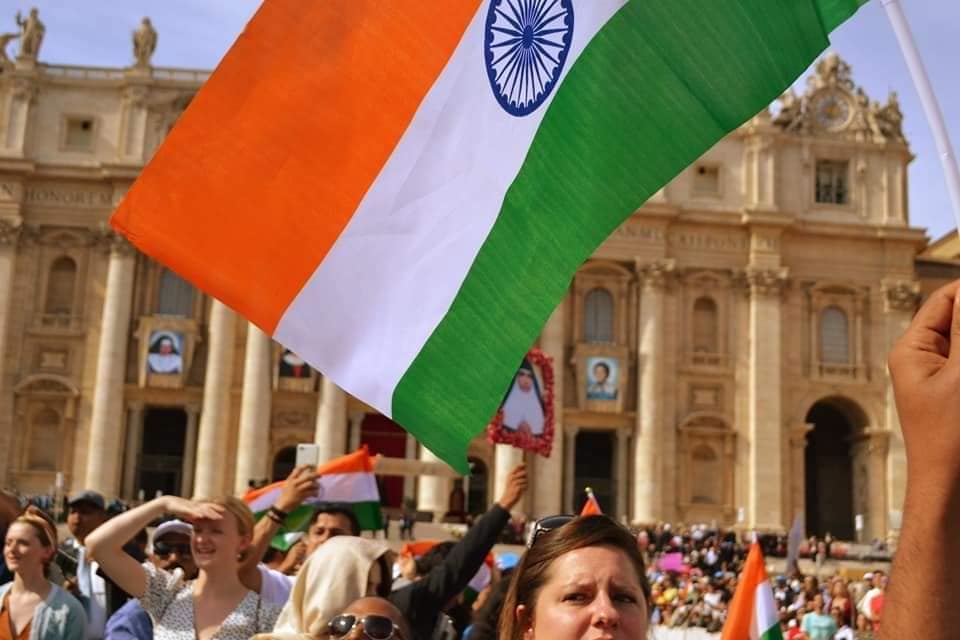


Canonisation images credits – Athirampuzha Church Facebook
Images Related To St. Mariam Thresia

കാക്കര [CC BY-SA 3.0], via Wikimedia Commons

കാക്കര [CC BY-SA 3.0], via Wikimedia Commons

കാക്കര [CC BY-SA 3.0], via Wikimedia Commons

കാക്കര [CC BY-SA 3.0], via Wikimedia Commons
Message from CHF

To families Blessed Mariam Thresia are known as the patroness, an apostle of families, still continues to ignite the world through her daughters.
A pioneer to transform families into Holy families, a custodian of the compassionate love of the crucified, a participant in the redemptive mission of Christ.
Stay with us. Witness God’s providence revealed, manifested and endorsed his compassionate love for Humanity through Thresia and her companions for a time span of hundred years.
Glimpses of the services of CHF







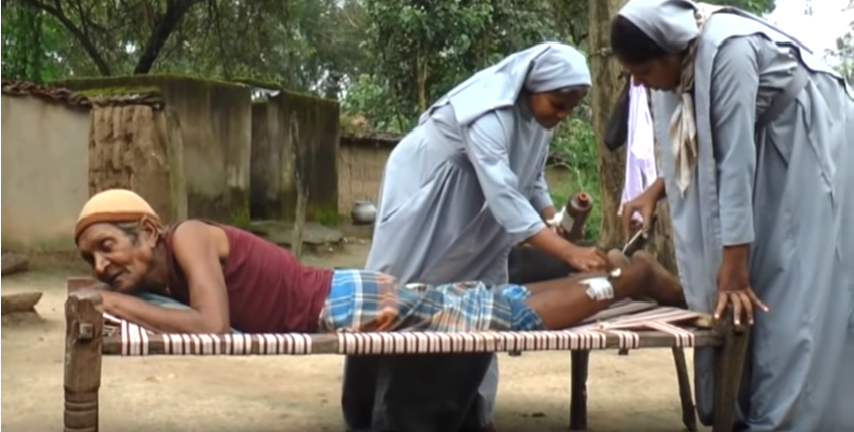


Images Credits : YouTube
Related links to Mariam Thresia Website
- Pride of India
- Life Untold
- Trials and temptations
- Last Words
- Miracles Through the Intercession of Mother Mariam Thresia
- Beatification
Puthanchirayude Ponprabhaye (St. Mariam Thresia) | Hits Of Sreya Jayadeep
Catholic Saints Of India

- St. Alphonsa
- Video St. Alphonsa – The passion flower of Kerala
- St. Kuriakose Elias Chavara
- St. Euphrasia
Will try to update the post after canonisation.
Thanks for sharing the post on your social media network.
I have collected informations and images from the internet and given attributes as required. Incase you find any errors or copyright violation, you can contact on lordofsick@gmail.com.
Mathukutty P. V.





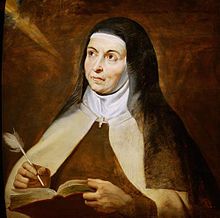




 Saint John Marie Vianney, who was adjudged as unintelligent proved to be a successful pastor. He led the people of Ars to repentance. The Church honoured him and promoted him to the rank of a Canon. We honour him on the altar as the patron and intercessor of priests. Hope and pray that this book published from Sehion Retreat Centre, in the year of priests, may help the children and youth to get attracted to the life of a priest and also to closely understand the Church and the saints.
Saint John Marie Vianney, who was adjudged as unintelligent proved to be a successful pastor. He led the people of Ars to repentance. The Church honoured him and promoted him to the rank of a Canon. We honour him on the altar as the patron and intercessor of priests. Hope and pray that this book published from Sehion Retreat Centre, in the year of priests, may help the children and youth to get attracted to the life of a priest and also to closely understand the Church and the saints. St. Ignatius Loyola was a man who had fought with vigor against the Protestant religious renewal organization built up by Martin Luther and his followers. Ignatius was a soldier who desired to live at the lap of earthly pleasures at his youth. But Jesus led him to the ladder of sanctity. This saint remains as a challenge to the youngsters of this period who like to immerse and live in the worldly pleasures. Pray that all who read this book may be blessed with the grace to lead a sanctified life .
St. Ignatius Loyola was a man who had fought with vigor against the Protestant religious renewal organization built up by Martin Luther and his followers. Ignatius was a soldier who desired to live at the lap of earthly pleasures at his youth. But Jesus led him to the ladder of sanctity. This saint remains as a challenge to the youngsters of this period who like to immerse and live in the worldly pleasures. Pray that all who read this book may be blessed with the grace to lead a sanctified life .
 St. Rita was a holy woman who was raised to sainthood, at the very beginning of the twentieth century – 1900, May 24 – at the opening of the Jubilee Year. More known as a mystic, St. Rita had led a heroic sanctified life in the positions of wife, mother, widow and later as a nun. This holy woman was a garden of virtues. God used to grant her, whatever she had asked for. Among the Spanish people, she is known as ‘Saint of impossibles’.
St. Rita was a holy woman who was raised to sainthood, at the very beginning of the twentieth century – 1900, May 24 – at the opening of the Jubilee Year. More known as a mystic, St. Rita had led a heroic sanctified life in the positions of wife, mother, widow and later as a nun. This holy woman was a garden of virtues. God used to grant her, whatever she had asked for. Among the Spanish people, she is known as ‘Saint of impossibles’.
You must be logged in to post a comment.